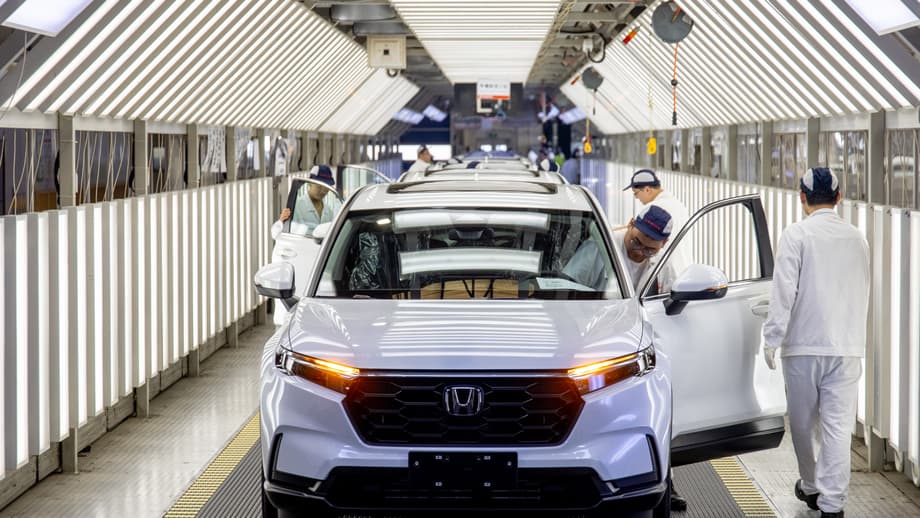How a chip dispute spiraled into a production threat
Factories across Europe and Japan are preparing for possible slowdowns after a clash over chip maker Nexperia tightened the supply of basic semiconductors that modern cars cannot do without. In mid October, the Dutch government took control of Nexperia, which is based in the Netherlands and owned by China’s Wingtech Technology. Beijing responded by blocking exports of Nexperia products that are assembled and tested in China. That single step threatens the steady flow of low cost components that sit inside hundreds of modules in every vehicle, from body control circuits to dashboard lights.
- How a chip dispute spiraled into a production threat
- What triggered the shortage
- Who uses Nexperia chips
- How fast could production stop
- Why substitution is hard
- Electric vehicles could be hit harder
- What automakers and governments are doing
- What a worst case looks like
- How the chip supply chain works
- Paths to relief
- What drivers and buyers might see
- At a Glance
Volkswagen has warned that production pauses cannot be ruled out and has drawn up contingency plans around key German plants. Japan’s industry group, the Japan Automobile Manufacturers Association (JAMA), said its members had been alerted by Nexperia to unreliable supply. Germany’s auto lobby, the VDA, cautioned that time is short. Cars contain hundreds of chips and a missing part that costs cents can stop an assembly line worth millions of euros per day.
The VDA’s president, Hildegard Muller, urged a rapid solution while companies and governments work the phones.
The situation could soon lead to significant production restrictions or even a stop in production if the interruption of Nexperia chip deliveries cannot be resolved in the short term.
The warnings are unusual in their speed and scope, a sign of how concentrated some parts of the semiconductor chain have become. Industry inventories provide only a limited buffer and several suppliers say they are counting parts in weeks, not months.
What triggered the shortage
The Dutch cabinet used emergency powers under the Goods Availability Act to take control of Nexperia, citing national security, governance concerns, and a duty to keep essential goods accessible in a crisis. Dutch officials also pointed to pressure from international export rules that target technology transfer risks linked to Wingtech. China then tightened the tap. The Ministry of Commerce restricted exports of Nexperia products made or processed in the country, including many items that go through final packaging and test at Chinese sites.
Nexperia’s network illustrates a common chip reality. Wafers can be processed in one country, then shipped for assembly and test far away. The company runs substantial manufacturing in the Netherlands, including its large site in Hamburg. Yet a majority of its end product capacity sits in mainland China, with a major assembly and test hub in Dongguan and a large wafer facility in Shanghai. Multiple industry estimates put the share of end products tied to Chinese packaging at roughly four fifths. When that door closes, supply to Europe and Japan narrows fast.
Packaging and test is the choke point
Automotive chips are often simple in function but must meet strict reliability standards over long vehicle lifetimes. That makes packaging and testing as critical as wafer processing. Once export licenses are required and shipments stall, even devices that look interchangeable on paper cannot be swapped at will. The current restrictions are hitting the exact stage where Nexperia’s volumes are concentrated, which is why the ripple has been so immediate.
Who uses Nexperia chips
Nexperia specializes in silicon discrete components and standard logic. These are not the headline microcontrollers that get much of the attention during chip shortages. They are the quiet workhorses: diodes that protect circuits, transistors that switch power, and logic gates that route signals. Almost every electronic control unit in a car contains several of these parts.
Automakers usually do not buy these chips directly. Tier one suppliers, including companies such as Bosch, Continental, Kostal, Magna, and Mitsubishi Electric, build modules that then go to car plants. Nexperia’s parts are embedded inside those modules. A body control unit that handles windows and locks might carry dozens of tiny Nexperia components. The same is true for lighting systems, wipers, airbags, and warning lights. S&P Global Mobility estimates that Nexperia holds a mid single digit share of the global automotive market for discrete devices, with an outsized footprint in Europe. That is enough to cause pain when a major export channel freezes.
How fast could production stop
European and Japanese groups say the window to fix logistics is very narrow. People involved in supplier planning expect the first impacts at module makers within days, with knock on effects across car plants within two weeks if chips do not resume moving. Volkswagen has said it is not directly supplied by Nexperia but that parts carrying Nexperia chips flow in from its suppliers. The company set up a task force to map exposure and has prepared options at Wolfsburg and Zwickau if certain modules run dry.
Other European brands, including Audi, Porsche, Seat, and Skoda, could feel second order effects if shared components are short. In Japan, carmakers are running the same playbook. The common message is that near term production is still running, yet short term stoppages are possible if supply gaps open.
Why substitution is hard
Replacing a chip in a car is rarely as simple as finding another part with similar specifications. The automotive sector uses formal reliability standards such as AEC Q100 for integrated circuits and AEC Q101 for discrete devices. A supplier must prove that a replacement can withstand temperature, vibration, and long life demands. The part must also fit the existing circuit board layout. Even when a second source exists, qualifying a swap can take weeks or months, and any change to control software or calibration requires extra validation.
Common parts, uncommon constraints
The very simplicity of these components masks the challenge. A small diode may cost a few cents, yet it was chosen for a specific package footprint and thermal performance, then validated through a rigorous process. If an automaker wants to approve another vendor, it must confirm performance in combination with the exact board design and vehicle system. That is why Tier one suppliers, not the automakers, are often the bottleneck. They carry the qualification burden and need time to document changes for safety regulators.
Electric vehicles could be hit harder
Electric vehicles carry many more chips than combustion models. High voltage power electronics, battery management systems, and advanced infotainment add layers of semiconductors. Industry groups estimate that an electric car can use twice as many chips as a gasoline car. That concentration raises exposure to any bottleneck. At the same time, Europe faces pressure on raw materials for electric motors. China, which dominates rare earth mining and processing, has tightened several export categories this year. Fewer magnets and fewer chips is a difficult combination for manufacturers already coping with thin margins on new electric models.
What automakers and governments are doing
Volkswagen has been in contact with suppliers to locate modules that carry Nexperia content and to prepare workarounds where possible. A company spokesperson said production has not yet been impacted, then added a clear caution.
Short term effects on production cannot be ruled out.
Germany’s Economy Ministry convened carmakers and suppliers to assess exposure and potential relief actions. The VDA said it is coordinating with policymakers on practical steps to keep critical lines running while alternatives are qualified. Across the Channel and in Brussels, auto industry bodies are also seeking clarity on the scope of the Chinese export restrictions and potential licensing paths.
Japan’s industry association, JAMA, acknowledged formal notices from Nexperia and signaled concern about continuity of supply. The association urged governments to find a workable solution without delay.
The chips manufactured by the affected manufacturers are important parts used in electronic control units, and we recognize that this incident will have a serious impact on the global production of our member companies. We hope that the countries involved will come to a prompt and practical solution.
Mercedes Benz said it has secured near term supplies but warned that planning beyond the next few weeks is hard. The company cited stronger supplier ties and digital tracking tools built after the pandemic era shortages, then offered a sober assessment.
The situation remains highly complex and volatile, making long term forecasts difficult.
Europe’s automaker group, ACEA, said its members had been informed that Nexperia cannot guarantee deliveries under current conditions. The association stressed that the issue cuts across many suppliers and brands.
Without these chips, European suppliers are unable to produce components needed for vehicle manufacturing. We are engaged with authorities to underline the sector’s critical reliance on this flow of parts.
What a worst case looks like
Analysts warn that a prolonged export block could reduce German car output by double digits. In a severe scenario, a third of production could be at risk if inventories drain and substitute parts are slow to qualify. A more moderate case would still cut output by around one tenth. The math is simple. Large factories produce thousands of vehicles per day and rely on a just in time rhythm. If a handful of module suppliers stop shipping, even temporarily, the system quickly runs out of slack.
Payroll and scheduling pressures rise immediately. Some plants move to shorter shifts. Others bank partially completed cars and wait for missing modules. That approach is costly and complicates quality control. Suppliers then face cash flow strain and must juggle labor in lockstep with their customers. If approvals for alternative chips stretch into months, the risk shifts from scheduling to market share as launch timelines for key models slip.
How the chip supply chain works
Modern semiconductors follow a long journey. Nexperia’s typical flow starts with wafer fabrication, then diced chips travel to packaging and final test. The last stage is heavily concentrated in China for Nexperia. Once finished goods are ready, they usually move back into Europe or Japan to be built into modules and vehicles. Geography matters because export rules often hinge on where the last significant processing step takes place. That is why packaging sites have become a flashpoint.
Concentration risk is the core issue
Even though Nexperia focuses on standard parts that have equivalents, a heavy share of its end product capacity is in one country. S&P Global Mobility estimates that roughly 80 percent of the company’s end products are tied to mainland China. The firm serves a broad mix of industries, but its reach inside automotive modules is deep. When a single location goes offline, the disruption multiplies across many small part numbers that touch dozens of module families. The breadth makes quick substitution harder, since there is no single bottleneck to bypass.
Paths to relief
There are several levers that could ease the pressure. Export licensing could allow certain automotive parts to flow. Nexperia and its owners could reorganize packaging routes through sites that are not covered by current restrictions, although that is slow to stand up. Tier one suppliers can also qualify footprint compatible parts from companies such as Infineon, NXP, and Texas Instruments, provided those firms have spare capacity and the parts meet safety standards. Governments can prioritize customs and certification slots for automotive components while talks continue.
No lever is instant. Even paperwork fixes take time in a complex global system. Many companies have weeks of stock, not months, for these commodity items. The practical sprint is to stretch inventory, find compatible substitutes for the most exposed modules, and secure targeted export permits for essential device families.
What drivers and buyers might see
If the disruption extends, dealers could face longer delivery times. Certain trims might be de prioritized to direct limited components to higher margin models. Some features that rely on specific modules could be delayed, for example ambient lighting packages or convenience electronics in non critical areas. Pricing pressure is possible if shortages coincide with other cost rises. Used car markets can tighten if new car supply dips for several weeks. None of these effects are guaranteed, yet the pattern from past chip shortages points in this direction if supply does not recover quickly.
At a Glance
- The Dutch government took control of Nexperia in mid October, triggering Chinese export restrictions on its China processed chips.
- Volkswagen says production is currently running, yet short term stoppages cannot be ruled out and contingency plans are in place.
- JAMA and VDA warned members about unstable supply, urging rapid resolution to avoid factory pauses.
- ACEA reports Nexperia cannot guarantee deliveries, calling the situation a cross industry challenge.
- Nexperia’s focus is on standard logic and discrete parts used across automotive modules, not headline microcontrollers.
- About four fifths of Nexperia’s end product capacity is tied to mainland China, creating a packaging and test bottleneck.
- Substituting parts requires qualification to automotive standards, which can take weeks or months.
- Electric vehicles are more exposed because they carry more chips per car than combustion models.
- Analysts warn of a potential double digit hit to German car output if the block persists and inventories drain.
- Automakers, suppliers, and governments have launched task forces to map exposure and explore export licensing and second sources.




